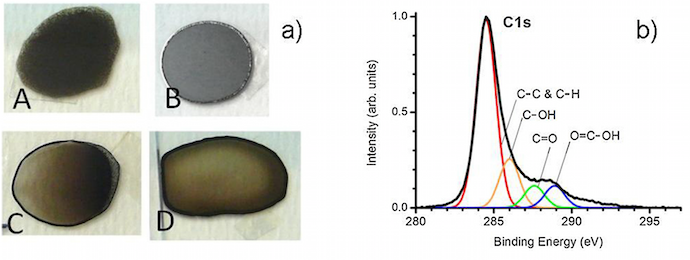Scientists change the morphology of graphene-like thin films for cheaper and environmentally friendly electronic devices*
|Modern day electronics has high demand in organic opto-electronical materials for liquid-crystal displays, organic-LED and even organic photovoltaic elements. Such materials have to be transparent and conductive, as well as flexible, cheap and compatible with large scale manufacturing methods. Carbon based organic conductors, such as carbon-nanotubes and graphene thin-layers, are promising candidates for future organic opto-electronic devices. However, the production of carbon-based films having simultaneously high stability, controlled thickness and tunable properties is still a challenge.

Italian researchers around Michela Alfè and Valentina Gargiulo from IRC-CNR and the University of Naples have developed a new manufacturing process for graphene-like (GL) thin layers. Their process is performed in water and is therefore cheap, environmentally friendly and easy to scale for industrial production needs. In order to develop and improve the process further, a fundamental understanding of all aspects of the film preparation is crucial. In particular, the quality of the thin film is expected to be strongly dependent on the pH of the water suspension from which the films themselves are prepared. To obtain this understanding, the researchers used CERIC’s highly sensitive Synchrotron X-ray Photoelectron Spectroscopy (XPS) in combination with Atomic Force Microscopy (AFM) and Dynamic Light Scattering (DLS) to investigate the influence of the pH on the synthesis process. They found that the thin-layers consists of a film of carbon nanoparticles. The shape of these nanoparticles, as well as the thickness and morphology of the film, strongly depend on how acidic the reaction solution is. This information is a first but important step in understanding the physical mechanisms of the process and opens the way to the possibility of controlling the surface morphology of GL layers by properly acting on the preparation parameters.
Original article
M. Alfè et al., Applied Surface Science 353 (2015) 628–635, doi: 10.1016/j.apsusc.2015.06.117



